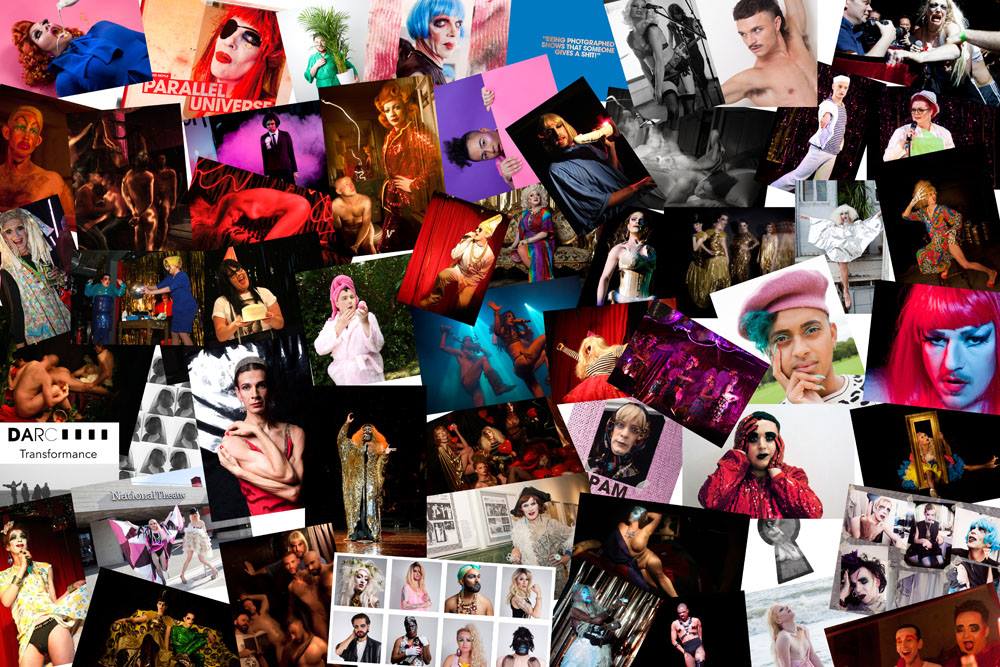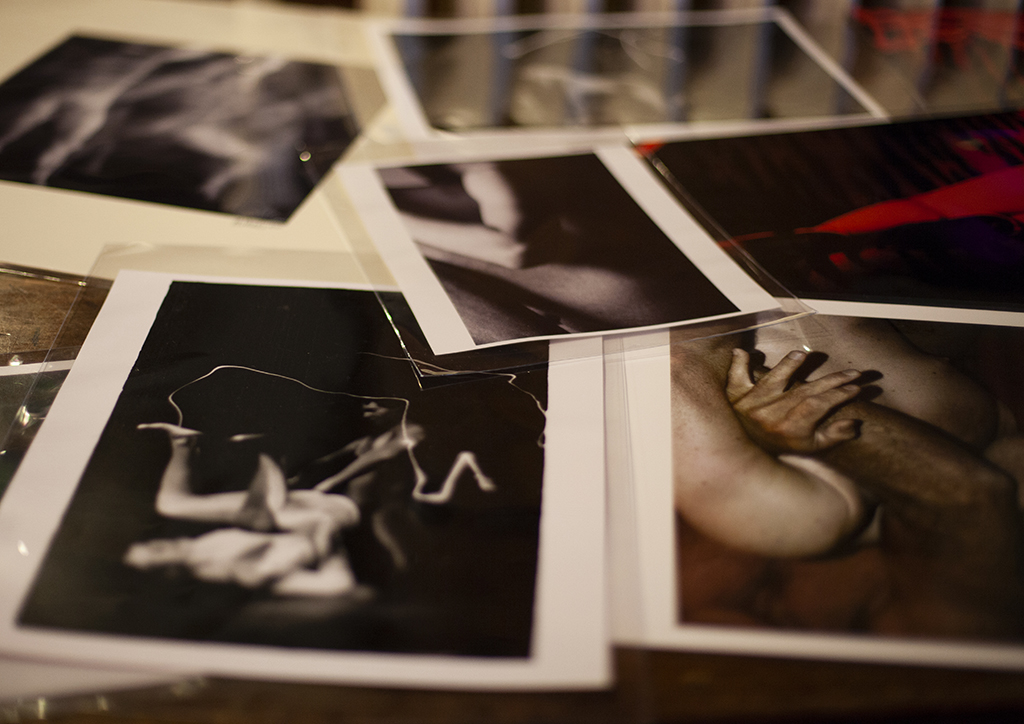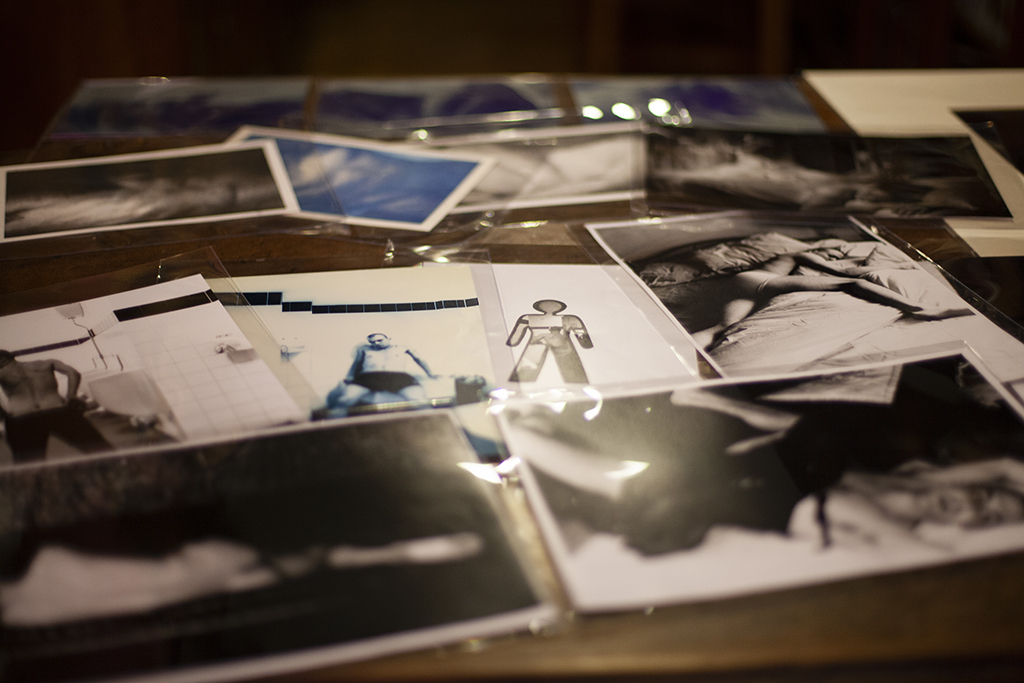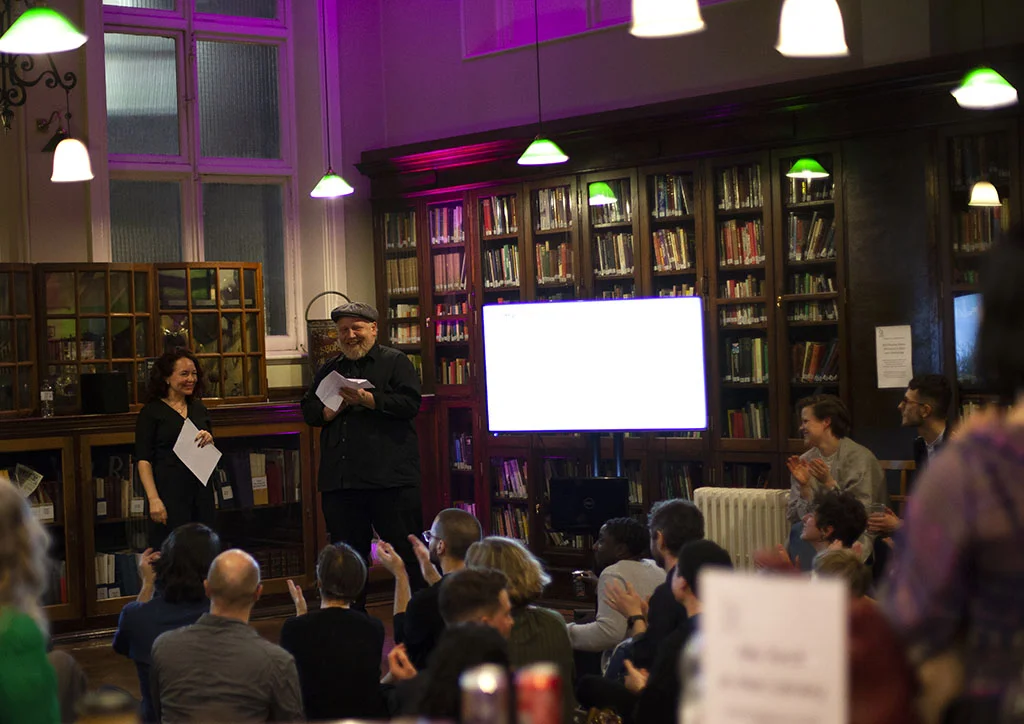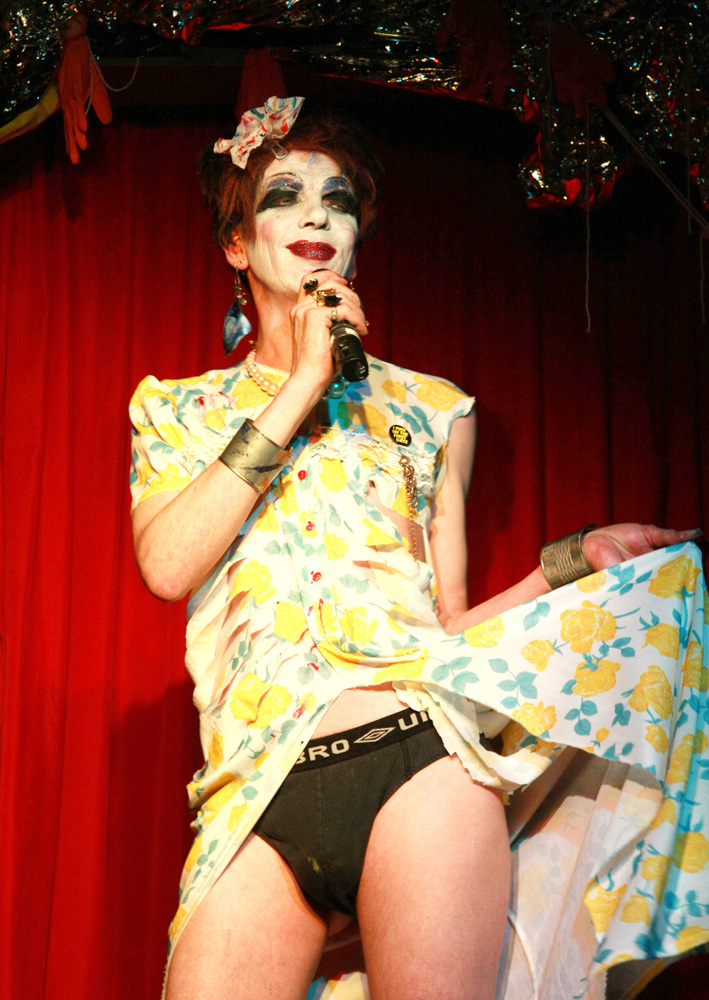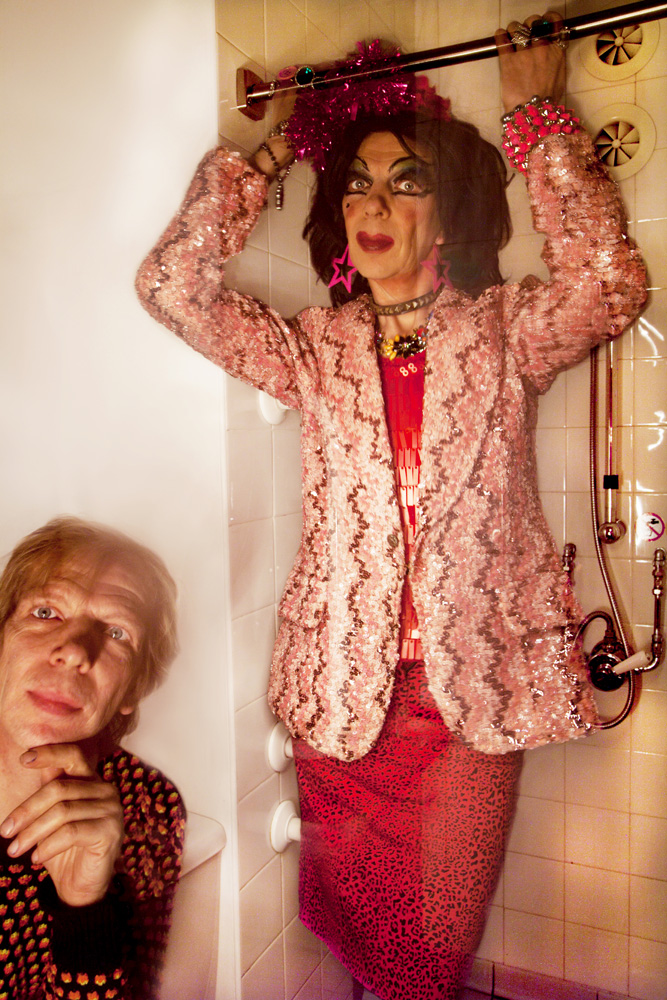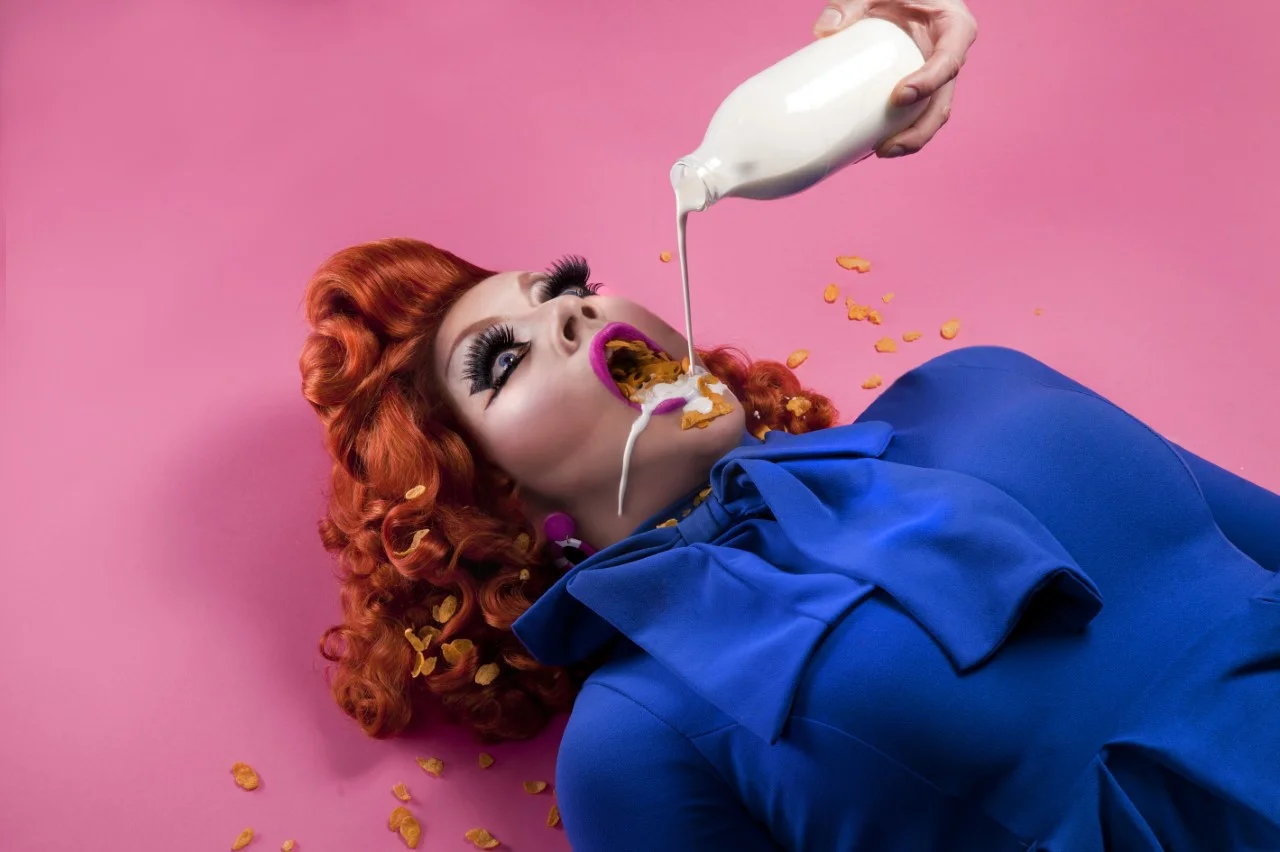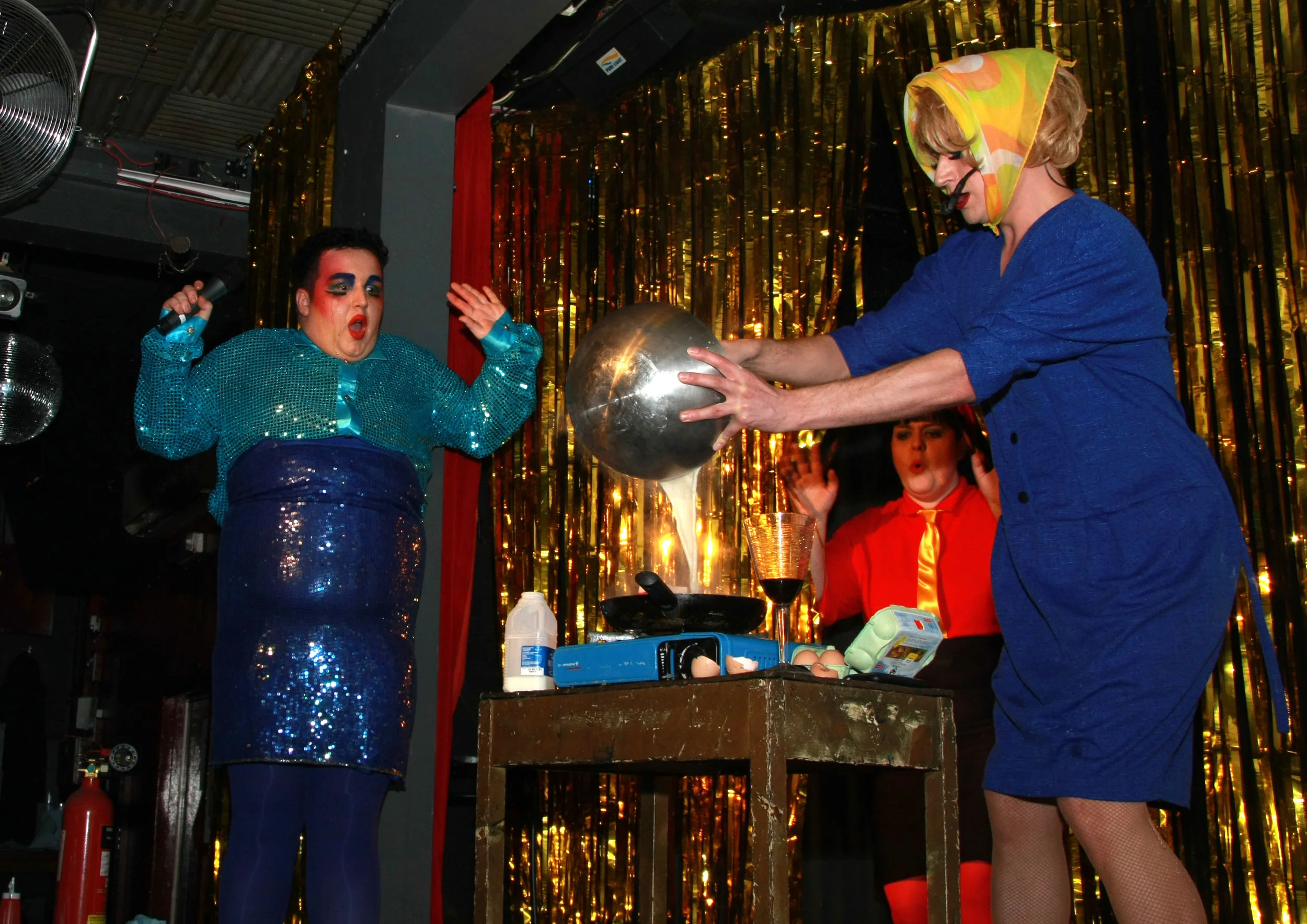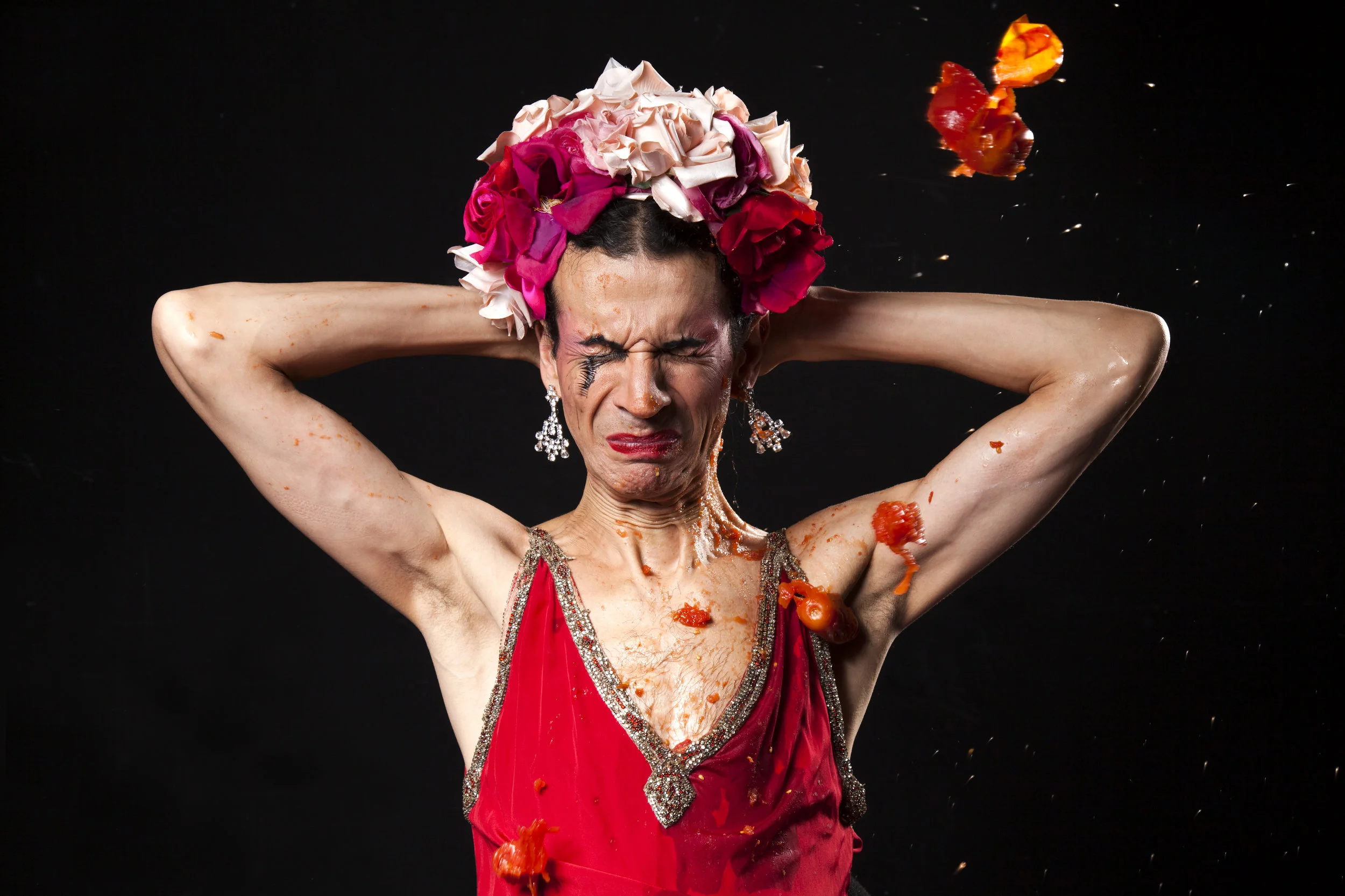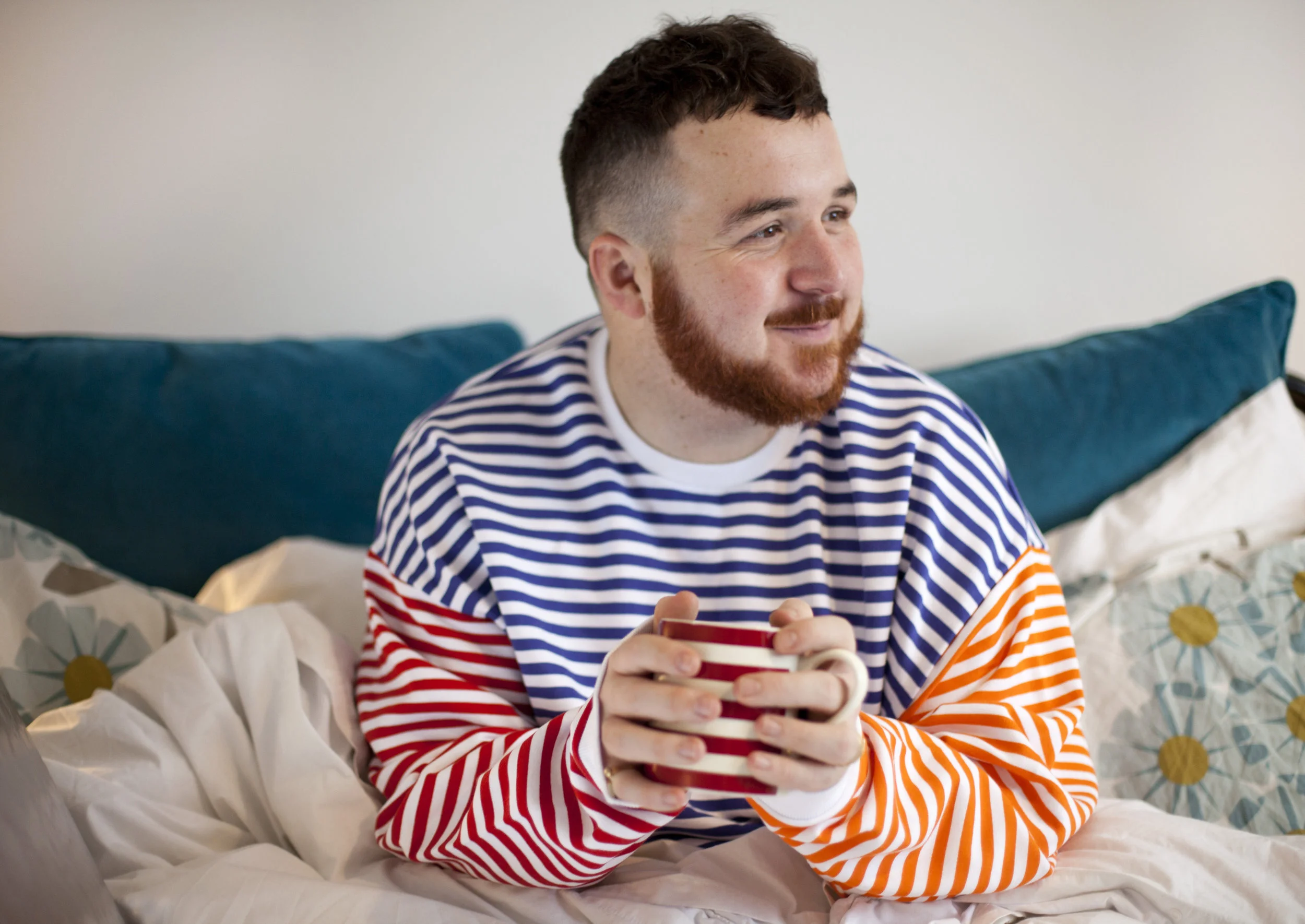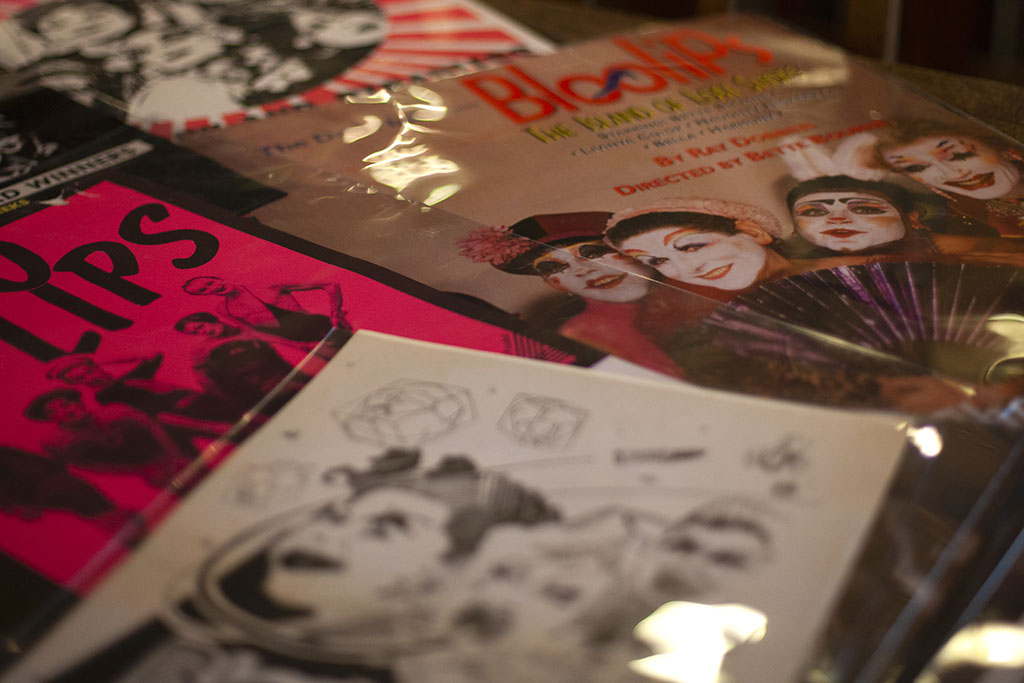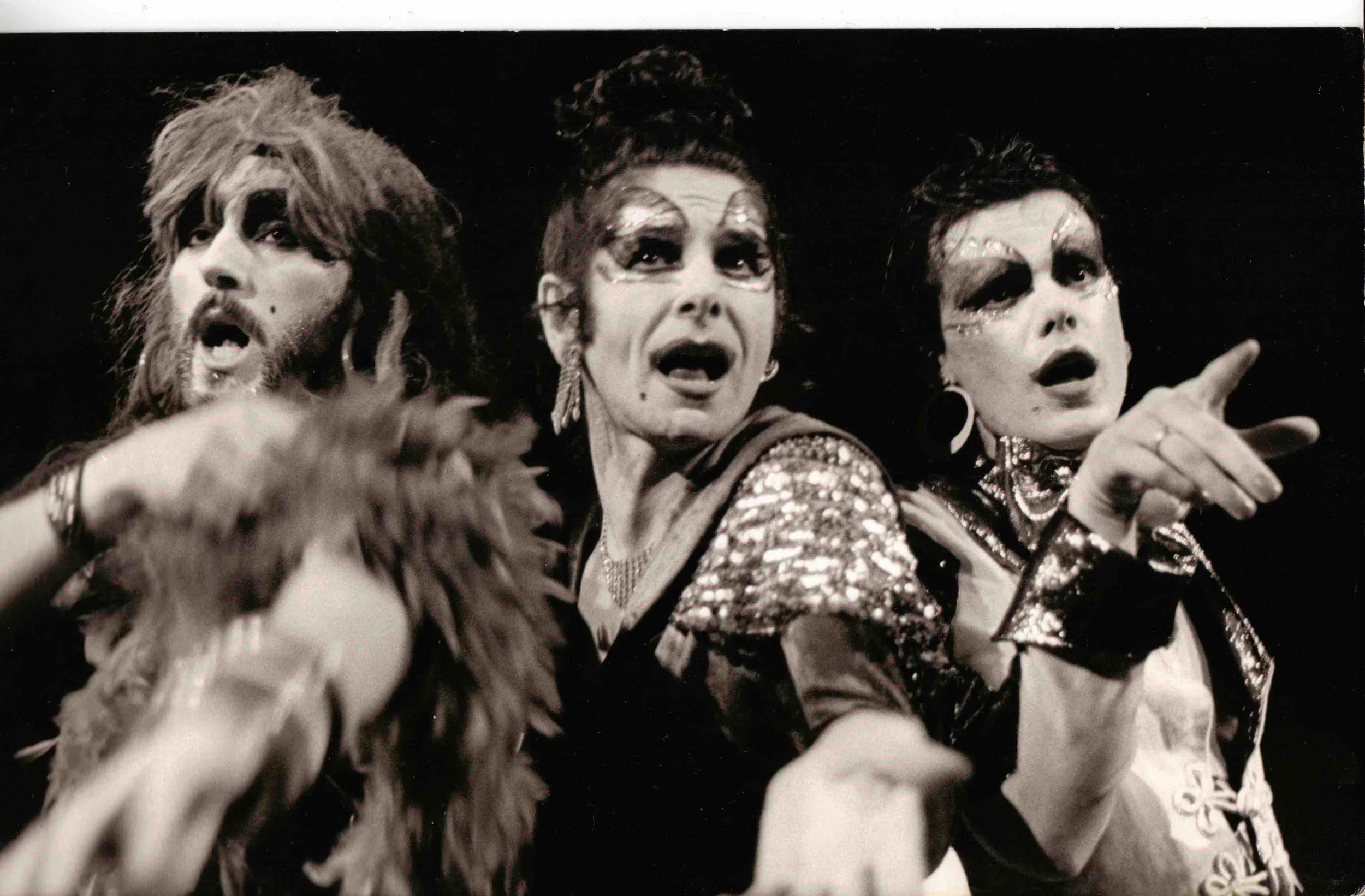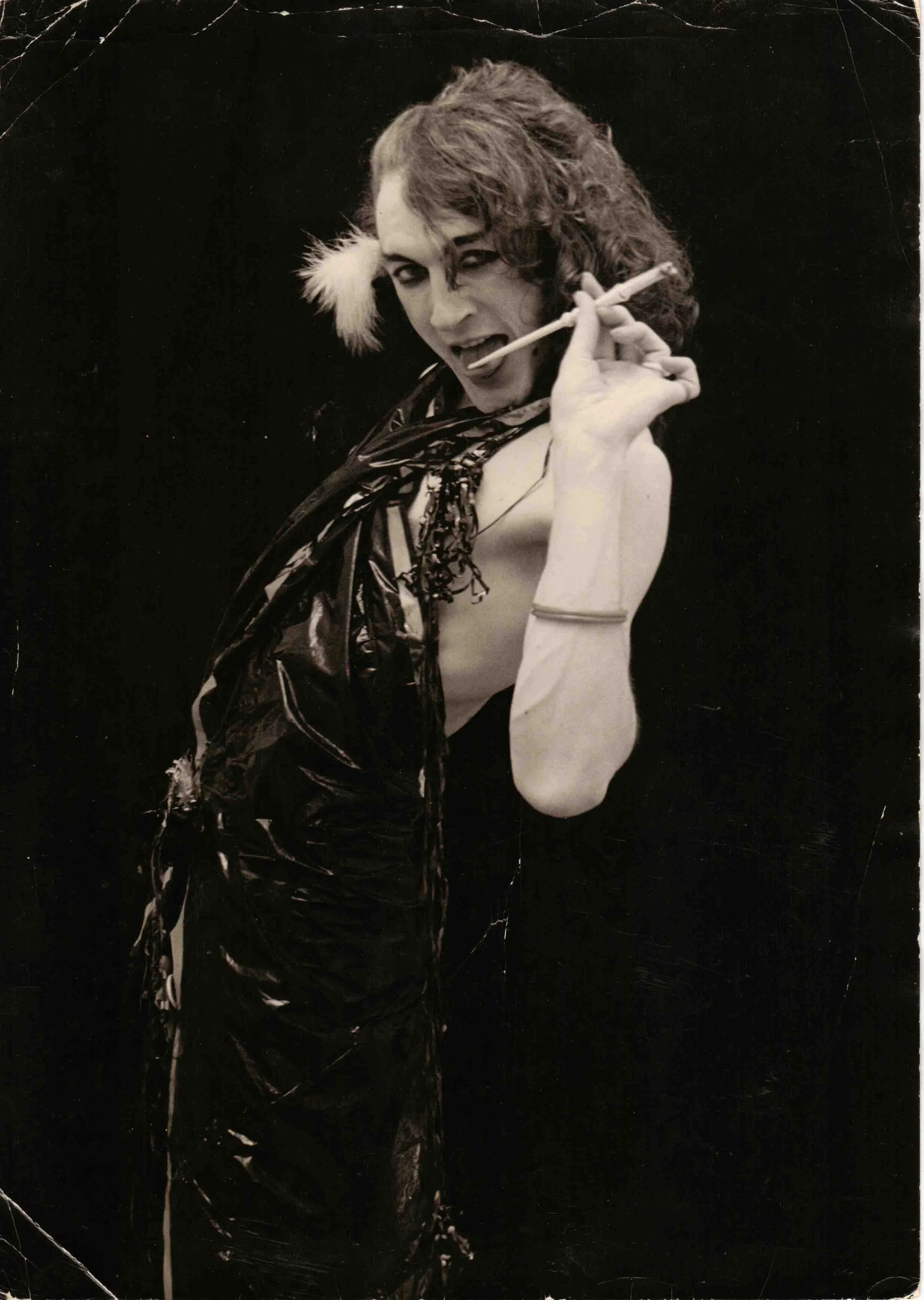My archive launched at Bishopsgate Institute on the 27th February 2019 with an evening of talks and the browsing of images and video dating back 10 years. It will soon be available for all to use as part of the LGBTQ+ collections at Bishopsgate Institute.
Bishopsgate Institute is home to one of the UK’s most comprehensive and accessible archives documenting lesbian, gay, bisexual, transgender and queer (LGBTQ+) histories. They started collecting LGBTQ+ materials in 2011, as part of their commitment to recording hidden histories and to preserving and sharing the history of protest and radicalism.
Here’s a link to my page on their website which includes some bio and lists the scope and content of the archive.
Alongside my digital archive there are prints of some of my earlier work which concentrated on the gay male nude predominantly, including many images made with adult performer Ashley Ryder and other muses from that time, when I was immersed in gay male culture and a very proud ‘fag-hag’! Some of these were on show at the launch alongside images made in my Darkroom installations and a slideshow showing a selection of digital images from my archive of London-based queer performance, promotional imagery and portraits.
Limited Edition set of postcards made specially for the launch.
A large part of the evening was taken up with talks starting with Stefan Dickers (archivist at Bishopsgate) and me doing a Qu. and A which went a little something like this but not entirely!
Qu. How did you start taking photographs?
A. I’m from a fine art background and always had a fascination with photography, making more theoretical work at university, using found photographs – I never wanted to be a photographer – that wasn’t art in my mind back then!
I have always been an obsessive documenter I realise and have kept a diary since I was 8 years old which holds very important information such as the first time I grated cheese! My written records became more visual in the 1990s when I was following local bands and became part of something I only thought I’d dream about, living a ‘kind of' rock n roll’ lifestyle, it had to be recorded but again I didn’t see it as anything more.
I never fitted into the fine art world and always felt inferior even with my friends at private views, I was an imposter, a visitor despite having trained like they had… I realise this has something to do with class as much as anything else now. I don’t really fit into the photography world either. It was the queer performance scene where I found my home and my people and they have become my work and I have always felt welcome and equal!
Before this I was spending all my time on the male gay scene which was influencing my work, I was making homoerotic nudes with some of my friends such as Ashley Ryder who I met through Mouse – it was her who initially helped open a few doors getting me on at the Erotic Awards parties to experiment with my installations – I even won one of their flying penises for ‘Innovation’! They were very open and made me feel very welcome and respected - they helped me build my confidence as an artist for sure.
DARKROOM was my first proper project which I did at art events such as Act Art in 2010 where I found myself on the same bill as some of my favourite performers such as Scottee and Jonny Woo which was really exciting. Here I had a huge room with a transient audience and guests became living sculptures performing to my camera and me performing the photography. I’ve created Darkroom installations in all sorts of places such as club toilets, a dungeon and a tent at the Barbican. I was more interested in the liveness of this, a happening, than the resulting images but I realised people wanted to make good photographs as well as have fun and be liberated, so I had to step up my game!
DARKROOM - Erotic Awards - Night of the senses - 2011
This image is from one of the DARKROOM installations, I had a number of boys set up in a tableaux for guests to interact with and make images – DARKROOM was a play on the terminology of analogue photography and the darkrooms at gay clubs where I often found my night ending as the boys I was out with continued into the night – I created my own space where all sorts happened! The theory was also about slowing photography down, making minimal images in a world that had become saturated with digitalisation.
Qu. What was it that attracted you to start documenting queer performance?
A. I was working alongside the BEST performers, the most interesting people around in my mind and I couldn’t believe it, but I wasn’t interested in taking photos of them on stage until I started to get to know them.
Scottee taught me the importance of documentation and its creativity plus he provided me with very stimulating subject matter of course – it was him that got me into it really when I was wanting to do my installation on one of his shows he wanted someone to document them and although I had no experience really in that kind of photography he was happy for me to learn on the job and I loved it - being part of a team seeing all that goes into the making of the shows I was into and meeting all the people I’d admired from afar.
David Hoyle invited me to do a DARKROOM installation on his show for the ‘Hot August Fringe’ at the RVT back in 2010. I’d been going to his shows as a punter for some time on and off and never felt the need to photograph him on stage as there were always lots of people there doing that and I wanted the full live experience – oh dear look what happened! I remember forcing myself shyly to enter Pam’s installations like her summer fetes in the urinals, little did I know that I’d one day be doing my stuff in there! I guess it was inevitable that I’d turn my lens onto David – all this access but it wasn’t until I got to know him that I became interested in documenting him and I spent a lot longer getting to know him before taking photographs back stage – he was always very welcoming to me but I didn’t feel comfortable getting my camera out in this intimate setting – the tiny dressing room at the RVT until I’d spent lots of time just chatting – now it’s part of our process and relationship and has become a ritual.
This image is one of the first I took of David on stage back in 2010 at Slurry which was on Wednesday nights at the RVT, they weren’t always that busy and this was the time I really started to get to know David. Here he is showing off his Umbro pants which have been going longer than I have – if you check out our book you’ll see they’ve been well documented over the years and have almost fallen apart now.
This next image of David is from my project Transformations which was a series of photographs documenting the transition from drag back to self in one long exposure, or prawn cocktail to ready salted in David’s words. I chose this one alongside the stage one as its really important to me to work on personal projects and images with the performers I document and to develop individual relationships – it all goes hand in hand for me. This image took over 20 minutes to expose!! The longest of the series with the shortest taking under 3 minutes. I don’t think David quite understood the technique at the time and with the lights off and the camera open I had to humour him as he got chatting, while I was panicking about the exposure as you only get to do one shot but as you can see it worked – this is the magic of photography which never fails to surprise and excite me!
Qu. Are there specialist skills/attributes you need to capture queer performance in photography?
A. I think it’s really important to capture the queerness of the work as best as possible and the atmosphere, make the viewer feel like they were there.
Being an insider – my interest and understanding is real. I love being part of a creative team getting to see how a show is made and I really appreciate the access I get and seeing behind the scenes, shooting the whole process from rehearsals to the live show…
For me, it’s really important to have a connection with the performer and to get to know them, I find it hard to take interesting photos of people whose work I’m not into – I need to be turned on to find the magic. I shoot what I LOVE and I am keen to preserve it in a way that is honest to the work and the performer. You have to CARE about the work, I can be quite OBSESSIVE too and photography is a great way of HAVING them – KEEPING them!!
I hate it when you get press photographers who don’t know the work coming in and taking boring sterile photos. They often don’t consider the audience or the performers either using flash in low lit spaces rather than a bright lens for example and taking too much space… Or seeing drag performers shot in the style of Sunday paper editorials; all clean and superficial.
Queer work is often messy as being queer can be a messy business and I want to capture some of that in my images, the grit and the glamour!
I asked Stefan to choose an image from my archive that he thought stood out and he chose this one of Ginger Johnson (2018)
Ginger (Donald Marshall) and I met when we were both starting out doing Scottee’s Hamburger Queen at the RVT – we just clicked right away and I’ve always felt so comfortable when Ginger’s around – I used to feel quite intimidated arriving pre show when Amy Lame, Scottee and maybe a celebrity or 2 were having their chips and a good ol gossip, they were very welcoming but I wasn’t as loud or confident as them so having Ginger to chat to and have a laugh with bought me out of my shell and I felt more at home. We soon started making our own photographs together and have always been able to make strong images whether it’s a 3 minute exposure at the end of a show in the toilets at the RVT like with his Transformations image or a full day studio shoot like this one – we understand each other and our capabilities when collaborating and I LOVE him.
Qu. What are your relationships with the performers you photograph? Is it important to build relationships
A. This question leads on well from talking about Ginger and as I’ve said for me its really really important yes.
Each relationship is very different and here we have Scottee who was the one who really got me into documenting queer performance as a creative act and as a job, he was always very savvy about documenting from the start and look at what he has now!! Others like Travis have caught on too and they are including me in their budgeting which is great for both of us – I think it’s these forever relationships that make the work strong.
Scottee and Russella - Hamburger Queen - RVT - 2012
I love the drama caught in this shot, the tension of the moment which happens a lot in queer work which is often messy as I said earlier. There has to be TRUST both between the performers and with me
I also picked this one as it was through Russella’s regular turns on Scottee’s shows that I got to know her beyond drunken encounters out and about and we started to work together on portraits and videos at her home and in the studio developing our friendship along the way. Photography is a great way to get to know someone and spend some quality time.
Jen Smethurst 2019
Qu. 5. Do you have new projects coming up?
A. I’m working on a participatory photography project about trans masculine identities with some brilliant people who I know from the community. I realized I didn’t know so much about their stories compared to the trans femme side and I was starting to learn and become interested, I also found that they were not so well documented as their trans sisters and when I started to sound them out they appreciated the attention and I knew I was onto something special – it’s early days but I’m really excited about this project.
I’m also planning an archival book for 2020 which will include much of what is here in my archive at Bishopsgate along with some of the more intimate images I’ve shot backstage and for projects.
Nando Messias - Shoot the Sissy - Promotional Image - 2016
I initially admired Nando from afar dreaming of documenting their beautiful work and we talked for quite some time about shooting something together based on walking which was a regular theme in their work at the time and I thought it would work well with the long exposure photography I was doing back then but that never happened however my dream came true and we have become quite close over the past few years with me documenting much of his work and making some of my favourite images I’ve ever made.
For the launch he did a beautiful talk about working with me and his interest in queer archives - here’s a few extracts:
“I met Holly quite a few years ago. I used to see her documenting other artists’ performances and was always intrigued by her—and maybe a little bit jealous of the artists she was documenting as well, I must confess. It took us a while to start working together but once we started, it was always a celebration. For those who don’t know this, working with Holly comes with lots of laughter. One of my earliest memories is our collaboration for Shoot the Sissy. She was not at all fazed by this idiosyncratic idea I had. She was tickled, though.”
“Bodies are archives too. Scars, spots and wrinkles mark events. They are milestones in our journey through life, documenting the passage of time. This notion of a living, organic archive is where my interest lies where I stand today, at the beginning of my path into this topic. In looking at it this way, I allow myself some agency in organising my own archive in a way that suits me by shuffling things around and privileging certain items/discourses over others, which might be engaging a less redemptive narrative, for instance.”
“In terms of queer discourse, it can be said that archiving is about keeping memories alive, not letting them die. It is about making space where there was none before. This is what makes the collaboration between Holly—a documenter, photographer and artist so committed to recording queer work—and Stefan at the Bishopsgate Institute—an organisation whose ethos is strongly rooted in preserving narratives which are in danger of extinction—such a good match.”
We had these lovely video messages from collaborators who couldn’t make the launch; Scottee and Travis Alabanza.
Video Message from Scottee
Video Message from Travis Alabanza
And to round things off we had the legendary Lavinia Co-op sharing images and stories from the Bloolips Archive. I would often see Lavinia who was always friendly and charismatic at the parties and gigs but it wasn’t until I invited her to the studio to be in my Transformations project that we met properly - I was quite nervous as I’d done some research and seen Lavinia had been photographed by the greats such as Peter Hujar one of my favourite photographers but she soon put me at ease and gave me some of the best advice “don’t rush – this is your time” I had a habit of being apologetioc for taking up people’s time with the technical side and didn’t want to bore them… I am still a bit that way even though I know my worth now… she also told me lots of stories and like with David I felt like I was getting a one on one show!!
Posters and flyers from the Bloolips Archive also held at Bishopsgate Institute
I was so happy with how the launch went - it was a truly queer family event with long term collaborators and newer ones all together in a room full of love. This beautiful Facebook post from Gareth Joyner aka Myra Dubois written that same evening says it all!
“And I'm back home! I spent the evening at Bishopsgate Institute at an event inducting selected works by Holly Revell into the Institute's LGBTQ Archive.
It was an unexpectedly moving evening. Suddenly there we all were! Younger, thinner, a bit more obnoxious and a little braver. It brought an awful lot of memories back, and most of them, despite the tantrums and the fall outs, I'm pleased to say were happy. I'm grateful for this. I've given such a lot of time recently to wallowing on the things I've done wrong that it was joyously refreshing to sit and silently celebrate a silly, highly creative and very exciting part of my life. It's also a little surreal to now find myself at an age where thing's that I've been a part of are considered 'history' (albeit of the very recent type) and I find my formative creative output (alongside many, many contemporaries) 'documented'. In my early 20s I would read about troupes such the Cockettes or Monty Python and long to be involved in some kind of scene or movement. Tonight I saw that as it turns out; I was!
It was comforting to share this with so many familiar faces from those years, some of whom I've not seen in some time. Nando's words resonated a great deal with me. In particular, their words on archiving as a process of making room for the new which was a viewpoint I hadn't yet considered. The whole evening felt like a warm nostalgic hug; and now, after making it all about myself and my feelings, I've got to hand it back to Holly and end on a note of congratulations. Your keen eye for a moment, your perception of character and your own individual artistry were quite rightly celebrated tonight and I felt the same thrill I always get when one of 'our lot' does well.
In short, what a thrill to have Myra's image included in an archive! She's a real museum piece!”
Myra Dubois to Gareth in 499 seconds’ - Transformations - 2014
I should also add that my archive is very much a PARTIAL recording coming from a specific perspective – my personal lens and doing this archive has made me realize how much the work is about me as well as my many muses!
Read the Muse did a lovely and perceptive review too.
“Through this intimate proximity, between photographer and muse, Revell perceives an underground world of the avant-garde, queer, and punk performance through her lens, and documents these moments into a tangible history for a community that has so often been erased, discriminated against, and scorned for its flamboyant, creative expression, and its daring to be different. In a time where hate speech and legislation has targeted and threatened the livelihood of the trans community, and has proliferated across the media landscape in the UK, there is no greater need for documentation and recording of the LGBTQ+ community’s history and presence than today.”
And finally I must say a MASSIVE THANKS to Bishopsgate Institute for having us and to everyone who made this launch such a beautiful success and of course to the many of you who have let me in with my camera!
Watch this space for details of the archive going live at Bishopsgate and how to use it.

